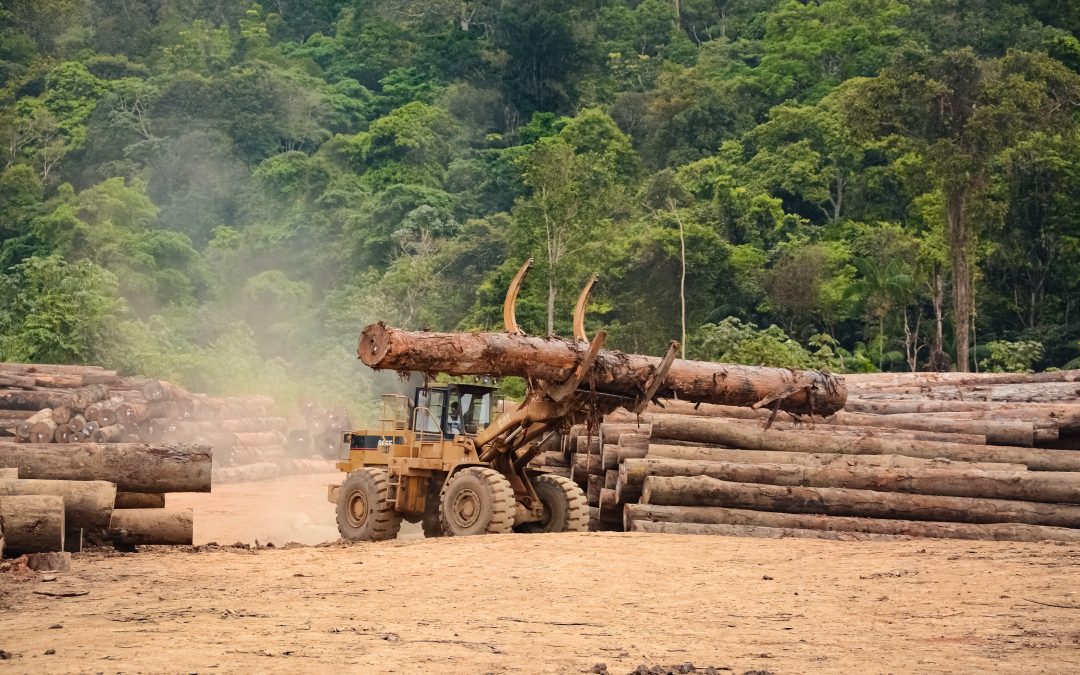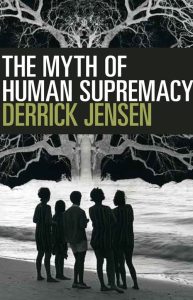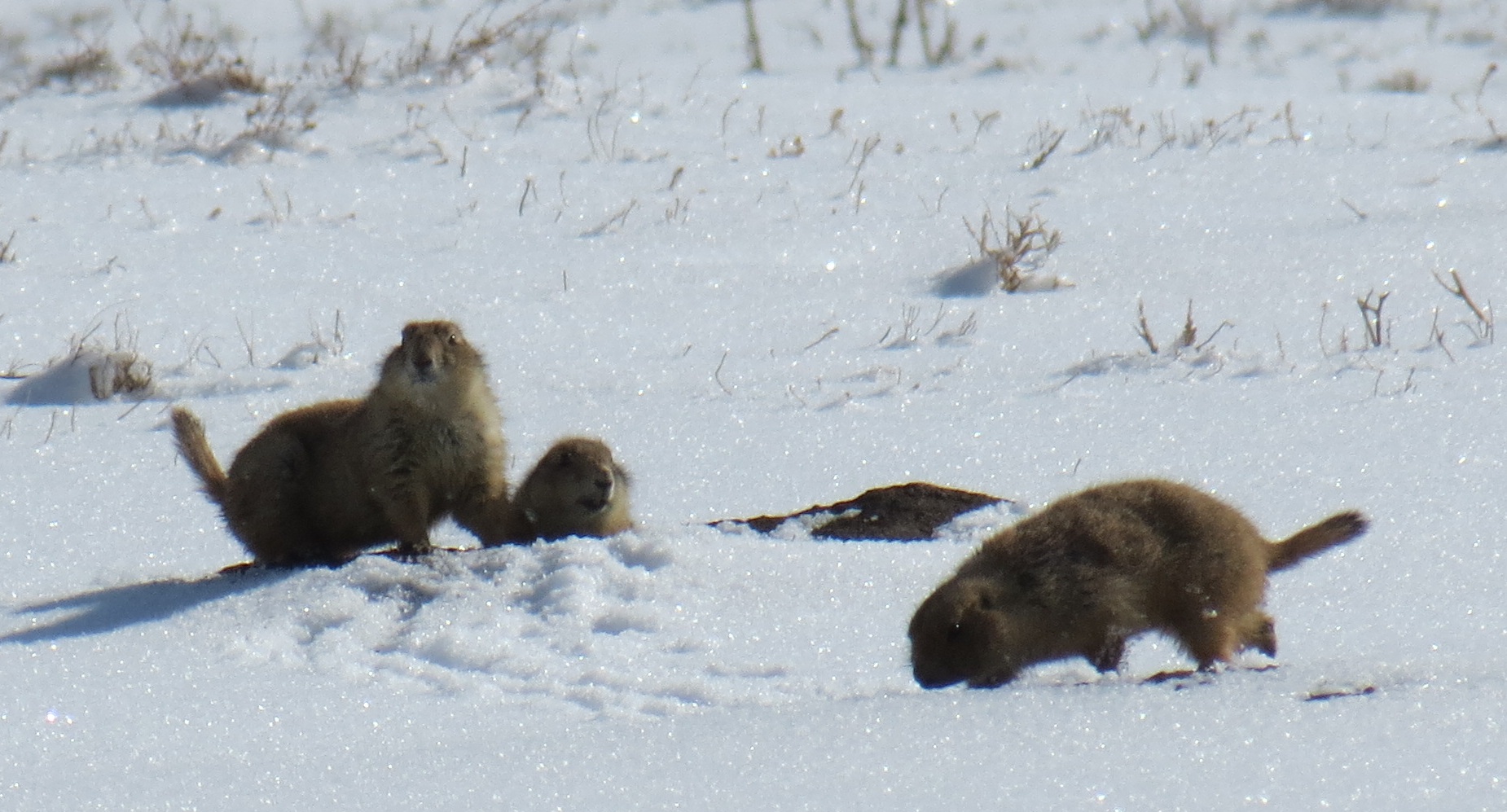
Derrick Jensen: The Myth of Human Supremacy
The following is an extract from Derrick Jensen’s 2016 book The Myth of Human Supremacy. From the book jacket: “In this impassioned polemic, radical environmental philosopher Derrick Jensen debunks the near-universal belief in a hierarchy of nature and the superiority of humans. Vast and underappreciated complexities of nonhuman life are explored in detail—from the cultures of pigs and prairie dogs, to the creative use of tools by elephants and fish, to the acumen of caterpillars and fungi. The paralysis of the scientific establishment on moral and ethical issues is confronted and a radical new framework for assessing the intelligence and sentience of nonhuman life is put forth.” Visit Derrick’s website to buy the book.
By Derrick Jensen
You’ve probably noticed I haven’t talked about the origins of human supremacism. Some say it began with the domestication of nonhuman animals, as we came to think of these as our dependent inferiors, as our slaves, our beasts of burden. Some say it began with agriculture, where the entire landbase was converted to human use. Some say the model for human supremacism is male supremacism: women are physically differentiable from men, and some men decided that differentiability meant inferiority, and validated their own superiority by repeatedly violating and controlling women; this model was then applied across racial, cultural, and species differences. Some say human supremacism really got its start with the creation of a monotheistic sky god and the consequent removal of meaning from the material earth.
These questions of origins, while interesting and on some levels important, are not vital to the current discussion. Right now this narcissistic, sociopathic human supremacist culture is killing the planet, and we need to stop it. Asking where it started feels a bit to me like wondering about the childhood traumas of the axe murderer who is tearing apart your loved ones. Sure, it’s a discussion to be had, but can we please stop the murderer first?
#
Because human supremacism—like other supremacisms—is not based on fact, but rather on pre-existing bigotry (and the narcissism and tangible self-interest on which all bigotries are based), I don’t expect this book will cause many human supremacists to reconsider their supremacism, just as books on male or white supremacism don’t generally cause male or white supremacists to reconsider theirs. The book isn’t written for them. This book is written to give support to the people—and there are a lot of us—who are not human supremacists, and who are disgusted with the attitudes and behaviors of the supremacists, who are attempting to stop the supremacists from killing all that lives. It is written for those who are appalled by nonhumans being tortured, displaced, destroyed, exterminated by supremacists in service to authoritarian technics. It is written for those who are tired of the incessant—I would say obsessive—propaganda required to prop up human supremacism. It is written for those who recognize the self-serving stupidity and selective blindness of the supremacist position.
It is written for those who prefer a living planet to authoritarian technics. It is written for those who prefer democratic decision-making processes to authoritarian technics. It is written for those who prefer life to machines.
#
I’m sitting again by the pond. The wind still plays gently among the reeds, plays also with the surface of the water.
This time I do not hear the sound of a family of jays softly talking amongst themselves. This time I hear the sound of chainsaws.
The forests on both sides of where I live are being clearcut. I don’t know why. Or rather, on a superficial level I do. The people who “own” both pieces of land had a “problem” they needed to “solve.” “Problem”? They needed money. Or they wanted money. Or they craved money. It doesn’t matter. “Solution”? Cut the trees and sell them.
Never mind those who live there.
So for weeks now I’ve been hearing the whine of chainsaws and the screams of trees as they fall. For weeks now I’ve been feeling the shock waves when the trees hit the ground.
Such is life at the end of the world.
#
 We end on the plains of eastern Colorado, where as I write this a friend is trying desperately to protect prairie dogs. A “developer” wants to put in a mall on top of one of the largest extant prairie dog villages along Colorado’s Front Range. The village has 3,000 to 8,000 burrows.
We end on the plains of eastern Colorado, where as I write this a friend is trying desperately to protect prairie dogs. A “developer” wants to put in a mall on top of one of the largest extant prairie dog villages along Colorado’s Front Range. The village has 3,000 to 8,000 burrows.
Prior to this human supremacist culture moving into the Great Plains, the largest prairie dog community in the world, which was in Texas, covered 25,000 square miles, and was home to perhaps 400 million prairie dogs. The total range for prairie dogs was about 150,000 to 200,000 square miles, and population was well over a billion.
Now, prairie dogs have been reduced to about five percent of their range and two percent of their population.
Yet because yet another rich person wants to build yet another mall (in this economy, with so many empty stores already?), much of this prairie dog community will be poisoned. That community includes the twenty or more other species who live with and depend upon prairie dogs. The prairie dogs (and some others) who are not poisoned will be buried alive by the bulldozers, then covered with concrete. This includes the pregnant females, who prefer not to leave their dens.
If you recall, prairie dogs have complex languages, with words for many threats. They have language to describe hawks, and to describe snakes, and to describe coyotes. They have language to describe a woman wearing a yellow shirt, and different language for a woman wearing a blue shirt. They have had to come up with language to describe a man with a gun.
Do they, I wonder, have language to describe a bulldozer? Do they have language to describe the pregnant females of their community being buried alive?
And do they have language to describe the murderous insatiability of human supremacists? And do others? Do blue whales and the few remaining tigers? Do the last three northern white rhinos, all that’s left because some human supremacists believe their horns are aphrodisiacs? Do elephants? Did the black-skinned pink-tusked elephants of China? Did the Mesopotamian elephants? And what about others? What about the disappearing fireflies? What about the dammed and re-dammed and re-dammed Mississippi? What about the once-mighty Columbia? What about the once-free Amazon? Do they have language to describe this murderous insatiability?
#
And perhaps more to the point, do we?
#
By the time you read this, the prairie dogs my friend is fighting to protect will probably be dead, killed so someone can build yet another cathedral to human supremacism. And by the time you read this, yet another dam will have been built on the Mekong, on the upper reaches of the Amazon, on the upper Nile. By the time you read this there will be 7,000 to 10,000 more dams in the world. By the time you read this there will be more dead zones in the oceans. By the time you read this there will be another 100,000 species driven extinct.
And all for what?
To serve authoritarian technics, to serve an obsession to validate and re-validate a self-perceived superiority that is so fragile that each new other we encounter must be violated, and then violated, and then violated, till there is nothing left and we move on to violate another.
This is not the future I want. This is not the future I will accept.
#
What I want from this book is for readers to begin to remember what it is to be human, to begin to remember what it is to be a member of a larger biotic community. What I want is for you—and me, and all of us—to fall back into the world into which you—and me, and all of us—were born, before you, too, like all of us were taught to become a bigot, before you, too, like all of us were taught to become a human supremacist, before you, too, like all of us were turned into a servant of this machine culture like your and my parents and their parents before them. I want for you—and me, and all of us—to fall into a world where you—like all of us—are one among many, a world of speaking subjects, a world of infinite complexity, a world where we each depend on the others, all of us understanding that the health of the real world is primary.
The world is being murdered. It is being murdered by actions that are perpetrated to support and perpetuate a worldview. Those actions must be stopped. Given what is at stake, failure is no longer an option. The truth is that it never was an option.
So where do we begin? We begin by questioning the unquestioned beliefs that are the real authorities of this culture, and then we move out from there. And once you’ve begun that questioning, my job is done, because once those questions start they never stop. From that point on, what you do is up to you.
More from Derrick Jensen on the DGR News Service.

